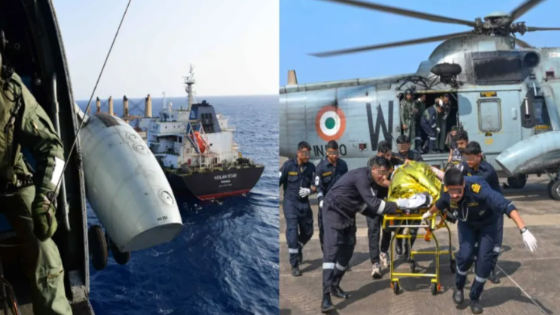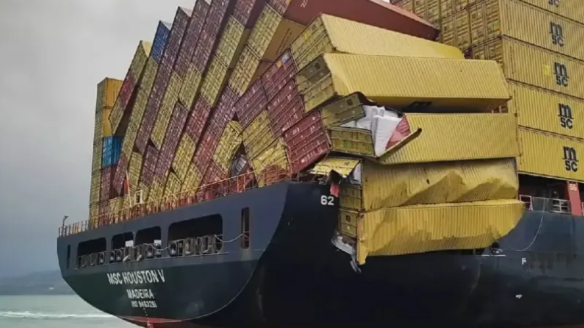The "Port Bypass Operation" of Shipping Giants Escalates! Why Has Europe's Gateway Rotterdam Become a Congestion Hotspot?
Logistics News
![]() 24-Mar-2025
24-Mar-2025
Recently, Mediterranean Shipping Company (MSC) and CMA CGM announced that their jointly operated Northern Europe-Australia route (NEMO/Australia Express) will temporarily skip the Port of Rotterdam until early June.
Coincidentally, the Ocean Alliance (CMA CGM, COSCO Shipping, Evergreen, and OOCL) has also replaced the Port of Rotterdam with the Port of Southampton on its Far East-Europe route.
This "port bypass operation" reflects the deep shocks currently being experienced by the global shipping industry.
The Congestion Dilemma at the Port of Rotterdam
- Vessel Waiting Time: In February 2025, the average waiting time at Rotterdam was 1.2 days, but some vessels experienced delays of up to 4 days.
- Yard Occupancy Rate: The yard capacity in the Antwerp-Rotterdam area has reached 100%, with truck slots reduced by 30% to prioritize handling backlogged containers.
- Pressure on Alternative Ports: Cargo is being diverted to ports like Antwerp and Hamburg, where barge loading and unloading waiting times have climbed to 76-84 hours.
Adjustment Details
London (UK) - Hamburg (Germany) - Antwerp (Belgium) - Le Havre (France) - Valencia (Spain) - La Spezia (Italy) - Marseille (France) - Réunion Island (France) - Port Louis (Mauritius) - Sydney (Australia) - Melbourne (Australia) - Adelaide (Australia) - Fremantle (Australia) - Singapore (Singapore) - Ennore (India) - Colombo (Sri Lanka) - London (UK)
The Butterfly Effect on the Global Shipping Network
- Stress Test on Alternative Ports
Ports like Southampton and Le Havre are facing triple challenges:
- Yard handling capacity is nearing its threshold (e.g., Algeciras Port in Spain has a yard occupancy rate of 90%).
- Feeder vessel delays have reached 72 hours, reducing inland transport efficiency.
- The EU Emissions Trading System (EU ETS) has increased operating costs, prompting companies like Maersk to adjust their Mediterranean routes.
- Restructuring of Asia-Europe Trade Routes
- Surge in Bypass Costs: If rerouting via the Cape of Good Hope continues, Asia-Europe routes will need two additional vessels, potentially increasing per-container costs by 12 times.
- Opportunities for China-Europe Rail Freight: Congestion at Nordic ports is driving some shippers to switch to rail, with China-Europe rail freight volumes expected to increase by 15% year-on-year in 2025.
Three Patterns of Global Port Competition
- Hub Replacement Cycle: The bankruptcy of Hanjin in 2016 led to the decline of Busan Port and the rise of Qingdao Port; the 2021 congestion on the US West Coast spurred the emergence of new hubs like Tacoma and Oakland.
- Policy-Driven Shifts: The EU ETS has forced Maersk to abandon Algeciras Port in favor of Tangier Med Port.
- Geopolitical Risk Transmission: The Red Sea crisis has caused a 42% drop in Suez Canal trade volumes, leading to large-scale route network adjustments by shipping companies.
From Rotterdam to Southampton, from Suez to the Cape of Good Hope, the rise and fall of each port are reshaping the capillaries of international trade. This "port bypass operation" is not just a game of efficiency and cost but also a reconfiguration of global supply chain dominance. For Chinese enterprises, building a more resilient logistics network is essential to seize opportunities in the unpredictable shipping landscape.

Last
Cargo Ship Explosion! 3 Injured, 1 Dead.
Recently, the Indian Navy and Coast Guard successfully conducted a rescue operation, saving 3 crew members from the Panama-flagged

Next
A large number of containers collapsed, with about 15 containers falling into the sea! MSC cargo ship in distress
The container ship MSC Houston V, operated by Mediterranean Shipping Company (MSC), encountered extreme weather near Portuguese wa
